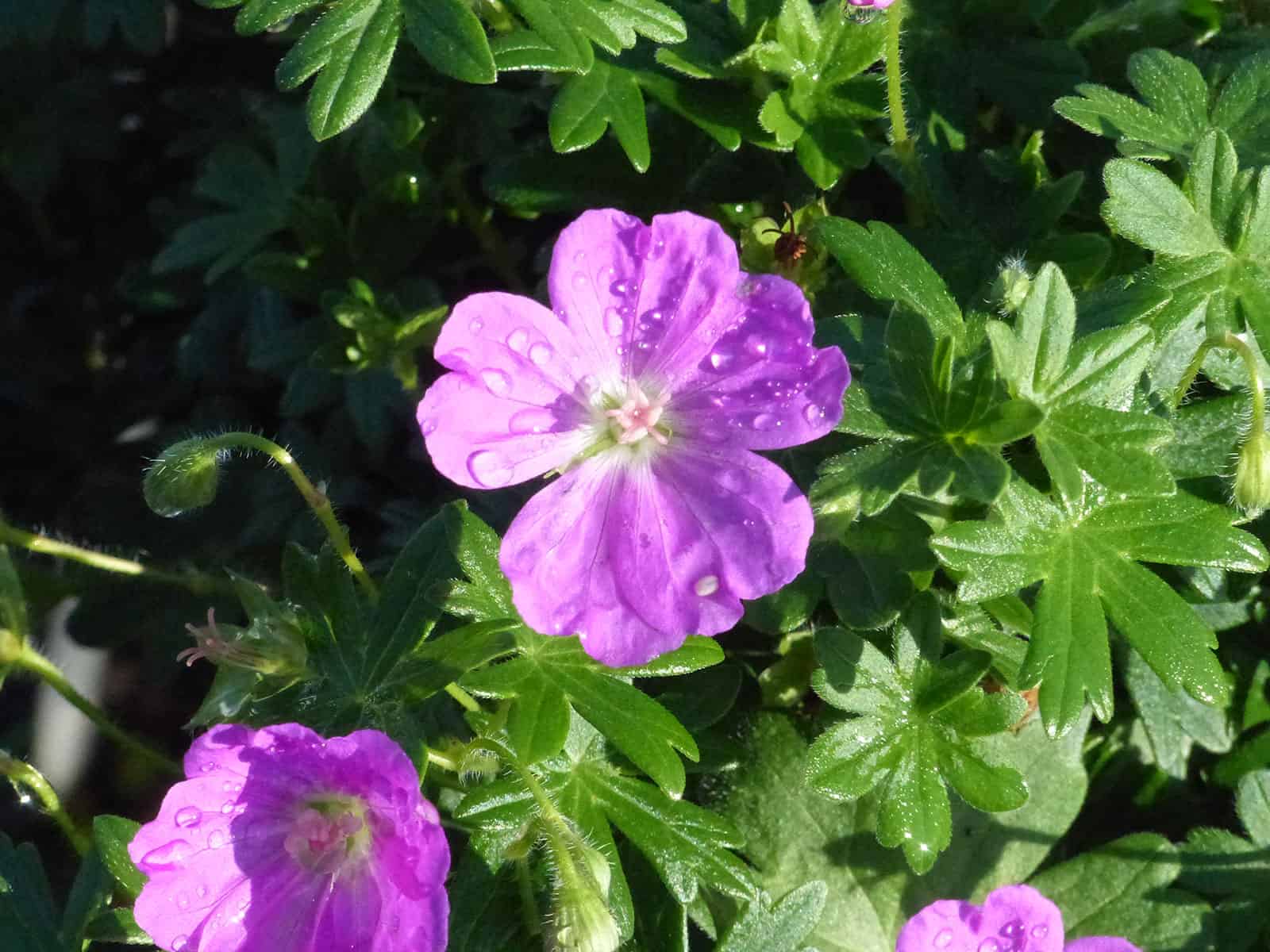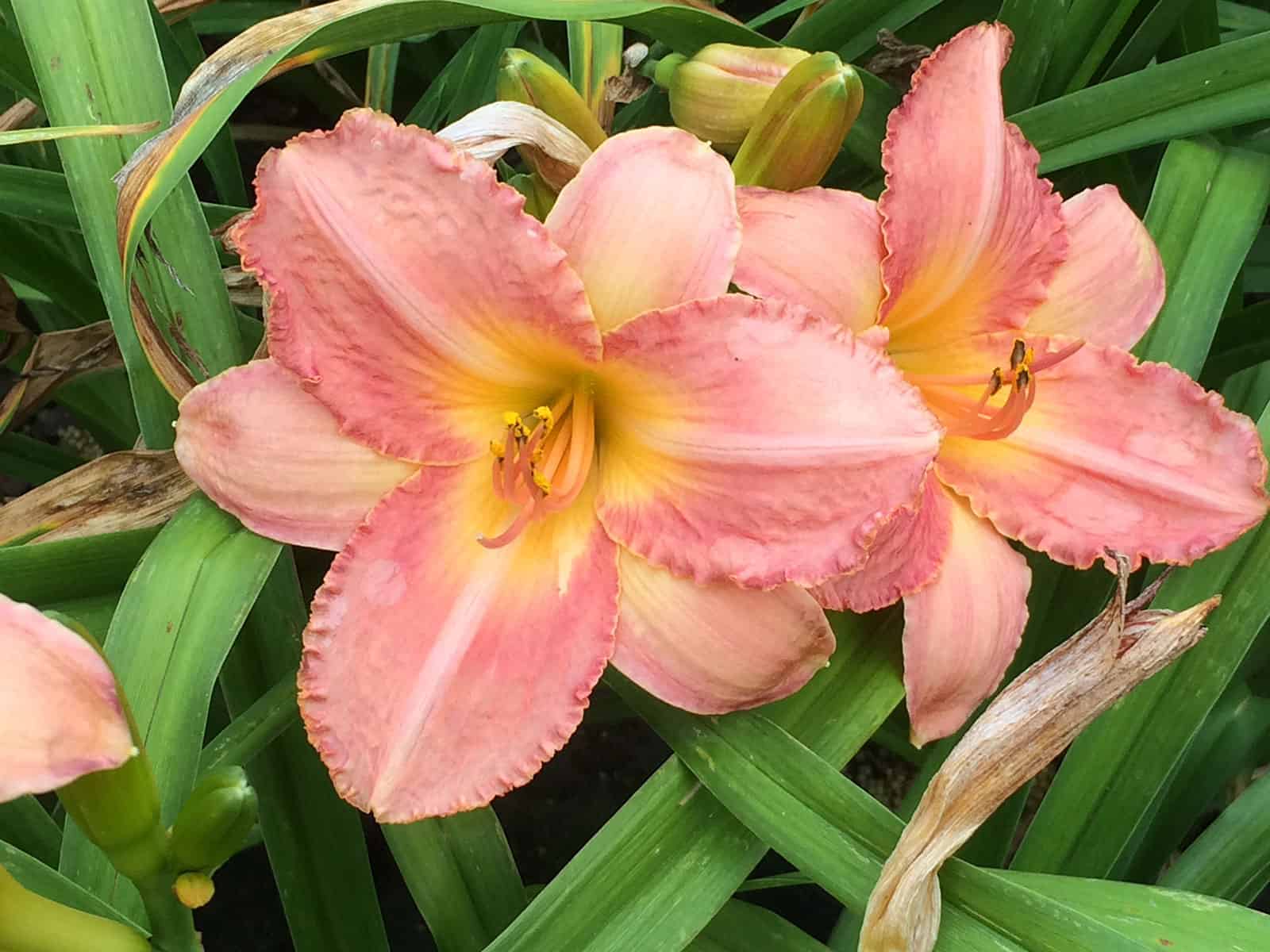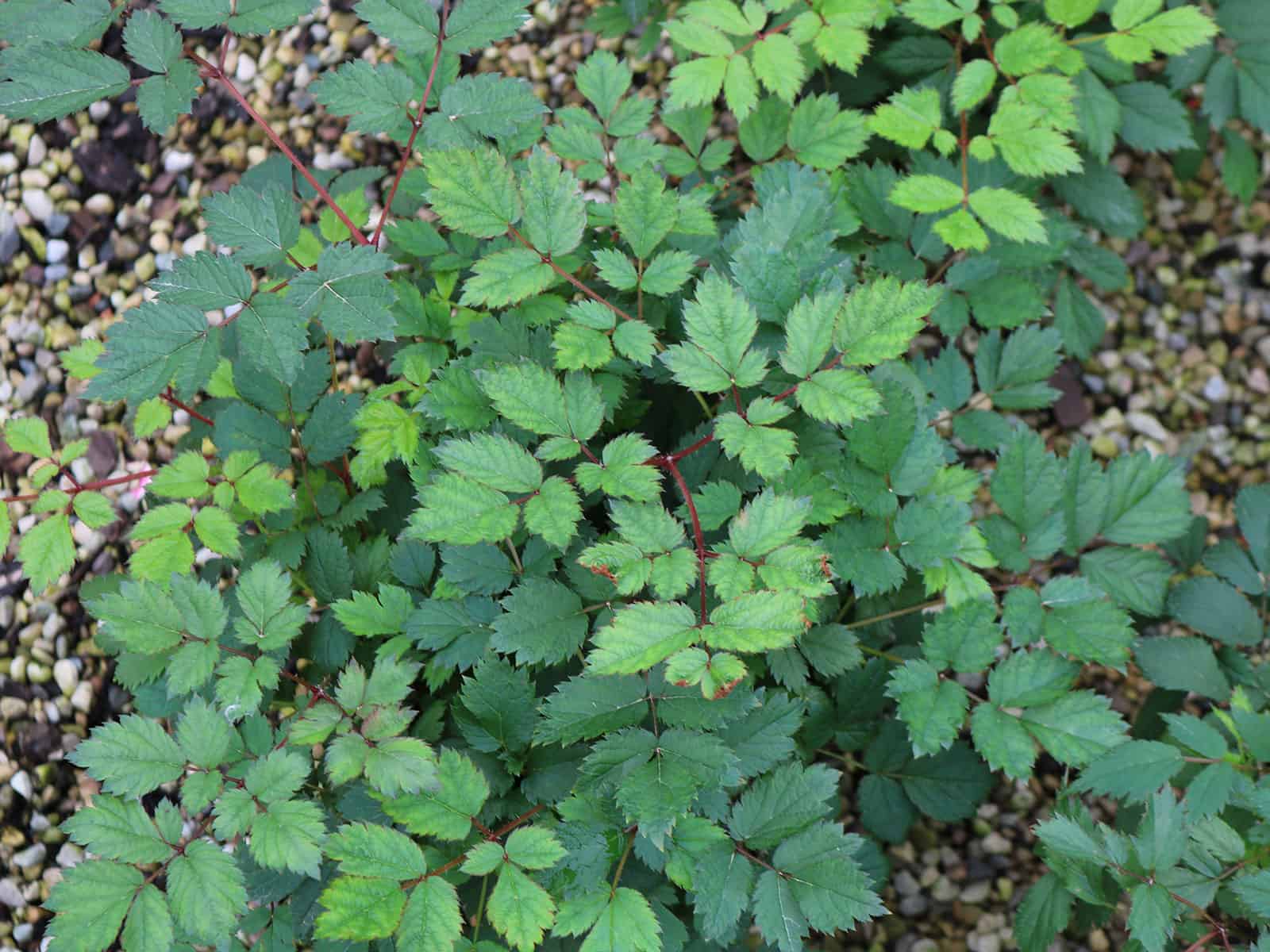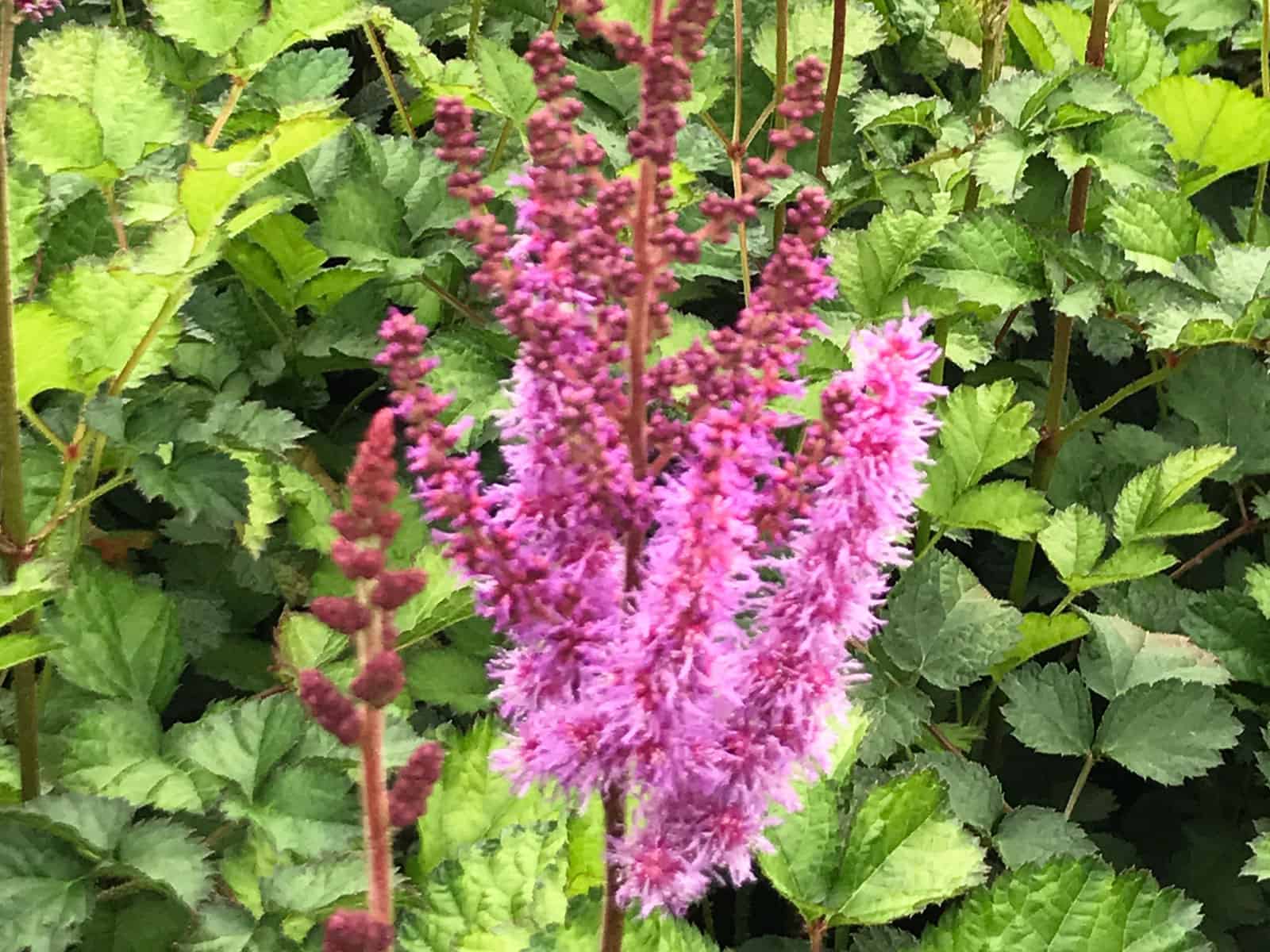
Easily grown in average, medium moisture, well-drained soil in full sun to part shade. Tolerates some drought, but produces most vigorous growth in moist, humusy soils with good drainage. Deadheading is tedious for larger plantings and probably unnecessary. Side stems may be removed at any time to control spread. If not deadheaded, some self-seeding may occur in ideal growing conditions. Foliage may be lightly sheared back and shaped to revitalize after flowering. This is a variable plant that is noted for having better tolerance for heat in hot summers and for cold in cold winters than most other species of geranium. Propagate by division, tip cuttings or seed.
Geranium sanguineum, commonly called bloody cranesbill or bloodred geranium, is an herbaceous, clump-forming perennial that typically grows in a mound to 9-12” tall with white-hairy trailing stems spreading over time to as much as 24” wide. It is native to Europe and Asia. It is perhaps the most common species of geranium grown in the U.S. today. Foliage consists of small, shallowly cut, dark green basal leaves and thinner, more deeply cut stem leaves. Solitary flowers (to 1 1/2” diameter) feature five unnotched magenta to purple crimson petals with darker veins. Flowers primarily bloom in May and June with a sparse but variable rebloom occurring throughout summer. After first fall frost, foliage usually turns attractive shades of red.
Genus name comes from the Greek word geranos meaning crane in reference to the fruit which purportedly resembles the head and beak of a crane.
Specific epithet comes from the Latin word sanguineus meaning blood red in reference to the flower color and red autumn leaves of the straight species.
‘Max Frei’ is a cultivar that is noted for its compact growth habit and reddish-purple flowers. It typically forms a spreading mound of foliage typically growing 4-9” tall and spreading 12-24” wide. It features 5-petaled, reddish-purple flowers and deeply-lobed, dark green leaves. Flowers bloom in late spring. Foliage often turns attractive shades of red in autumn.

The Chicago Peach Daylily showcases soft pink and peach-colored trumpet flowers with lemon-yellow throats, rising above low-growing mounds of arching green foliage. Blooming from early to mid-season, this low-maintenance plant is perfect for borders, beds, and containers, and becomes drought-tolerant once established.
Ornamental Features: Chicago Peach Daylily presents striking pink trumpet-shaped flowers with peach hues and lemon-yellow throats at the stem ends from early to mid-summer. The flowers are excellent for cutting, and its grassy leaves stay green throughout the season.
Landscape Attributes: Chicago Peach Daylily is an herbaceous perennial featuring tall flower stalks above a low mound of foliage. Its fine texture distinguishes it from other garden plants with coarser foliage. This plant requires minimal maintenance and is best cleaned up in early spring before active growth resumes. It attracts butterflies and has no significant negative characteristics.
Recommended Landscape Applications:
- Mass Planting
- General Garden Use
- Groundcover
Chicago Peach Daylily reaches about 24 inches in height at maturity, extending to 32 inches with the flowers, and spreads approximately 24 inches. For mass planting or bedding, space individual plants about 18 inches apart. It grows at a medium rate and can live for around 10 years under ideal conditions. As an herbaceous perennial, it dies back to the crown each winter and regrows from the base each spring. Avoid disturbing the crown in late winter when it may be less visible.
This daylily thrives in full sun to partial shade and adapts well to both dry and moist locations under typical garden conditions. It is not particular about soil type or pH and is highly tolerant of urban pollution, making it suitable for inner city environments. This variety is an interspecific hybrid and can be propagated by division, though certain propagation restrictions may apply.
Lilac plumes over deep green glossy foliage of Astilbe Pumila blooms in late summer extending the season. Low-growing variety when planted in groups produces a dense cover. Chinensis is somewhat more tolerant of sun and drought conditions than other Astilbe.
Easily grown in average, medium moisture, well-drained soils in part shade to full shade. Prefers moist, humusy, organically rich soils. Soils must not be allowed to dry out. If regularly watered, foliage will usually remain attractive throughout the growing season. A summer compost mulch helps retain soil moisture. This Chinese astilbe variety is noted for having better sun and drought tolerance than most x arendsii hybrids. Removing faded flower stalks will not prolong bloom but may improve plant appearance, particularly if a ground cover look is desired. On the other hand, many gardeners leave the flower stalks in place after bloom because of the continuing ornamental interest of the dried seed heads. Divide clumps when overcrowding occurs (every 3-4 years).
Light pink flower plumes are striking against coarsely textured, blue-green foliage. The dense, upright form is perfect in a dappled shade border, woodland garden or as a groundcover. An excellent cut flower, fresh or dried. Tolerates drier soils than other astilbe. An herbaceous perennial.
Astilbe are a popular choice for shady gardens, where they perform well if given a rich, moist soil and regular watering. This recent midsize selection features showy, soft-pink plumes, over a compact mound of elegant, lacy blue-green leaves. Also thrives in tubs, or mixed containers. Excellent for cutting. Seed heads may be removed, or left on the plant for winter interest. Will tolerate full sun, in cool summer regions. USPP#11860, CPBR#1333: unlicensed propagation prohibited.

Cheerful spikes of pink snapdragon-like flowers over spreading plants. Ideal middle-of-the-border plant for contrasting color and foliage among dwarf shrubs. Thrives in shaded settings and prefers moist conditions. Herbaceous perennial.
Chelone lyonii, commonly called turtlehead, pink turtlehead or Lyon’s turtlehead, is an upright, clump-forming, rhizomatous perennial in the figwort family which typically grows 2-4’ tall on stiff, square stems. It is native to wet woodland areas and streams in the southern Appalachian Mountains from Virginia to South Carolina and west to Tennessee, northern Mississippi and northern Alabama. It has escaped gardens and naturalized in parts of New England and New York. Hooded , snapdragon-like, two-lipped, pink flowers (to 1” long) bloom in tight, spike-like terminal racemes from late summer into fall (late July to September). Flowers have puffy pink corollas with lower lips bearded with yellow hairs. Flowers purportedly resemble the heads of open-mouthed turtles, hence the common name. Ovate, coarsely-toothed green leaves (to 3-6” long) have slender petioles, rounded bases and pointed tips.
Genus name comes from the Greek word chelone meaning tortoise in reference to the turtlehead shape of the flowers.
Specific epithet honors John Lyon (1765-1814), American botanist, who was an early explorer of the southern Appalachians.
‘Hot Lips’ features rosy pink fall flowers (richer pink than the species), bronze green maturing to dark green foliage (deeper green than the species), and red stems.
An explosion of color, Alma Potschke Aster is blanketed in warm reddish-pink daisy-like flowers with cheery yellow centers. A color breakthrough in this type. Very showy. Pairs nicely with grasses. Asters provide a nectar source for butterflies as well as a host plant for their larvae. Clusters of daisy-like flowers are produced at the tips of branching stems and create a stunning display against the dark green foliage.
Cinderella is part of the Asclepias genus and is a Swamp milkweed variety. Its scientific name is Asclepias incarnata ‘Cinderella’. This variety typically blooms in the following colours: French rose, and typically produces a medium vanilla fragrance.
Good-looking, compact, bushy and heat loving, Achillea millefolium ‘Pomegranate‘ is a stunning Yarrow with its masses of long-lasting clusters of rich velvety red flowers which immediately catch the eye. Its pleasantly aromatic, semi-evergreen, green fern-like foliage is disease resistant and nicely compliments the cheerful flat umbel flowers.








